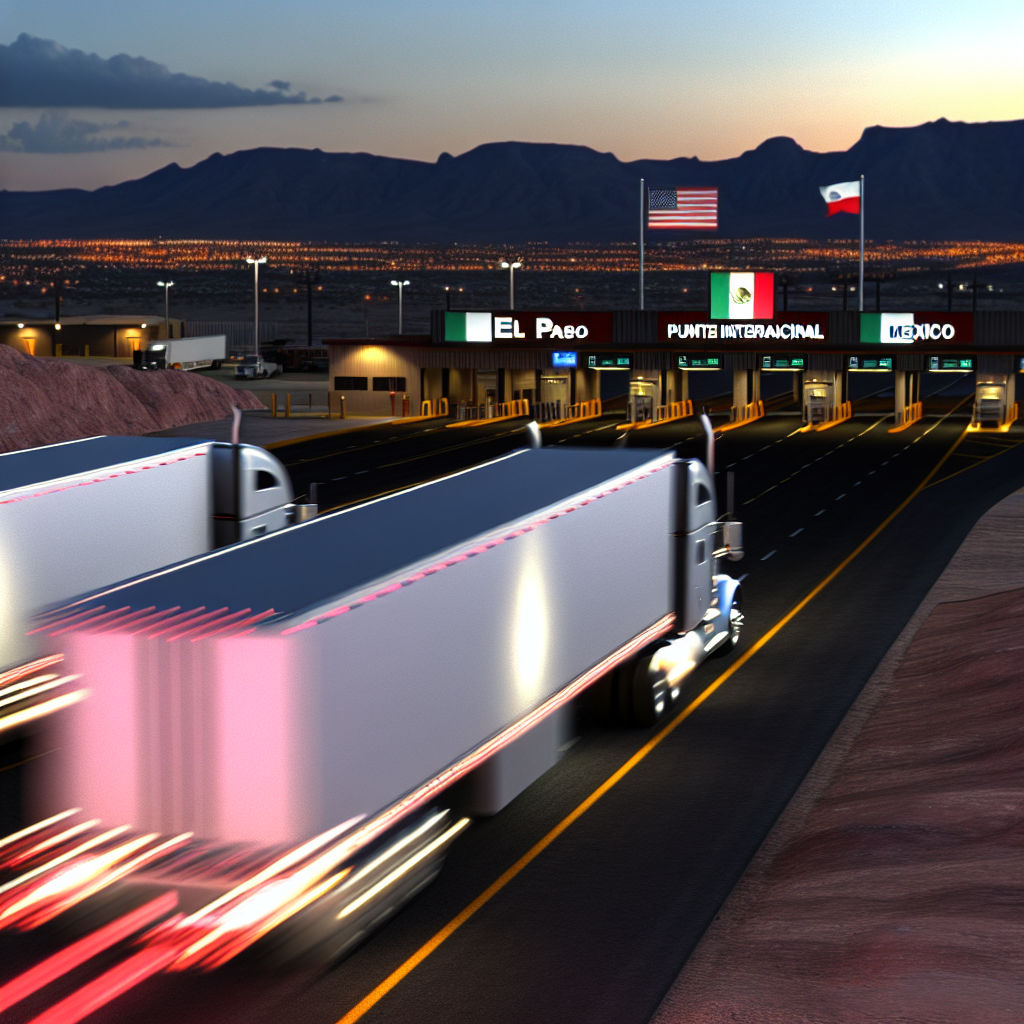C.H. Robinson’s latest Texas buildout is the clearest signal yet that cross-border trucking is being rewired by Mexico’s manufacturing surge. The company has added a major El Paso site to its border footprint, a move that dovetails with the nearshoring storyline highlighted in FreightWaves’ Borderlands coverage and shifts more freight orchestration to the El Paso–Juárez gateway.
On November 14, C.H. Robinson disclosed it has brought on roughly 450,000 square feet of warehousing and cross-dock space in El Paso, lifting its total U.S.–Mexico border footprint to more than 2 million square feet. Executives framed the expansion as a capacity play for customers in high-tech, automotive and medical devices moving through Chihuahua and other northern states. For carriers, this translates into more drop-and-hook opportunities, faster turns, and additional yard slots on the El Paso side of the line.
Why El Paso—and why now? Fresh data points that surfaced with the announcement spotlight Chihuahua’s momentum: the state led Mexico in exports during Q2 2025 and posted a 35.7% year-over-year jump, driven by computer and communications equipment. That electronics-led mix matters for trucking because it tilts flows toward higher-value, time-sensitive loads and tightens cycle times on northbound linehaul into Texas distribution nodes. Expect tighter appointment windows, more secured facilities, and greater reliance on bonded, FTZ-enabled cross-docks to keep cargo compliant and moving.
Competitors are planting deeper stakes, too. On November 16, Kuehne+Nagel said it expanded its El Paso operation with a bonded facility adding 20,252 square meters—boosting its local capacity by 60%, with 53 dock doors and 65 trailer positions to support two-way flows. The timing underscores how the Juárez–El Paso cluster has become the second pillar alongside Laredo for cross-border truck networks, giving shippers additional routing options when congestion or policy shocks hit a single port of entry.
What it means for carriers and shippers on the ground: more freight is being engineered to clear quickly at the border and be reallocated deeper in Texas. For carriers, denser cross-dock networks in El Paso should cut empty miles between border yards and inland terminals, support tighter milk runs, and create steadier local and regional work—particularly on night shifts aligned to maquila schedules. For shippers, diversified gateways reduce overreliance on a single crossing, improve resilience against ad hoc slowdowns, and enable modal blends (e.g., dray to short-haul TL) that protect service when demand spikes. Those that lean into CTPAT, FTZ usage and preclearance tech will be best positioned to capitalize on the added capacity.
Bottom line: As of November 16, 2025, the nearshoring flywheel is still turning, and the border’s capacity map is changing with it. C.H. Robinson’s El Paso expansion—mirrored by moves from other 3PLs—signals a multi-gateway strategy that should matter to every dispatcher and shipper routing through Texas. In practical terms, plan for earlier dock appointments at El Paso cross-docks, coordinate trailer pools on both sides of the line, and price lanes with the expectation that high-value northbound tech freight will keep pressure on capacity through the winter.
Sources: FreightWaves, Container News, MarketScreener, 3D InCites
This article was prepared exclusively for TruckStopInsider.com. Republishing is permitted only with proper credit and a link back to the original source.




